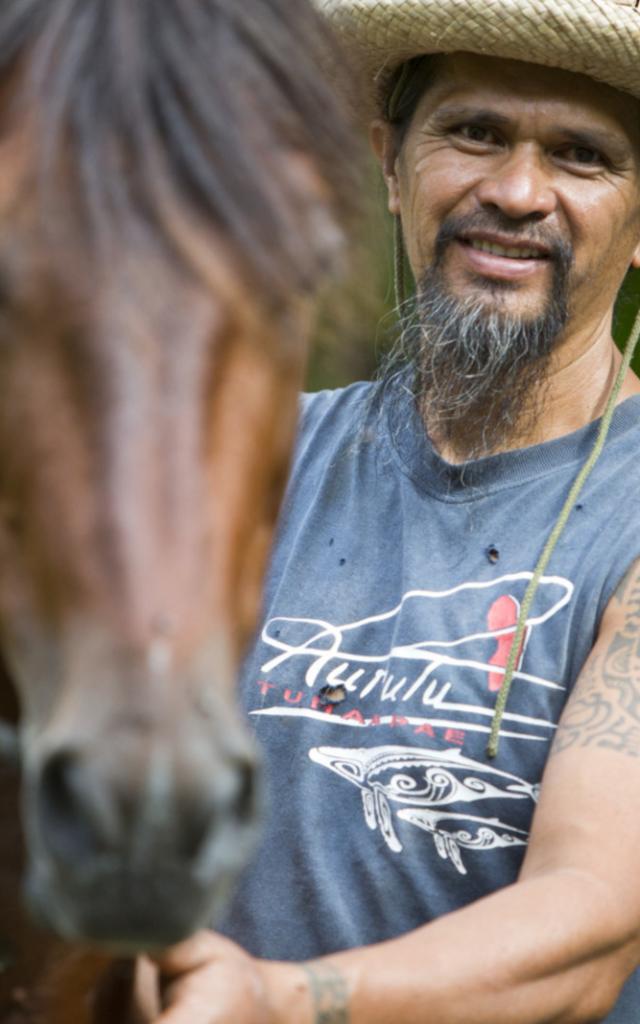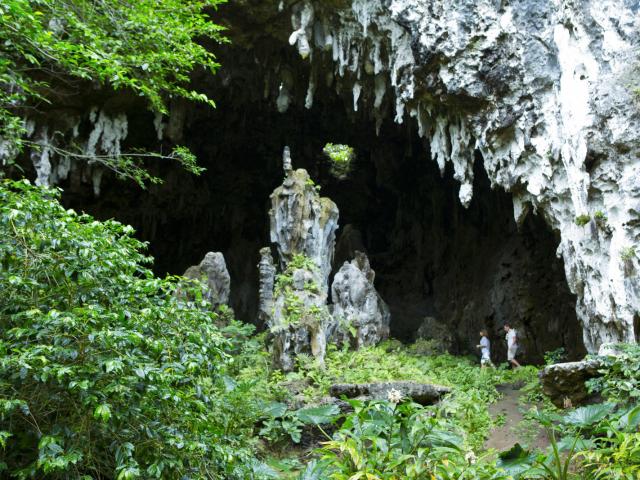 Scooter in Rurutu - Tahiti Tourisme
Scooter in Rurutu - Tahiti TourismeRurutu is a unique island, as you’ll soon appreciate if you take a guided tour in an ATV four-wheel drive. About a million years ago, Rurutu was raised up about 150 meters, which accounts for the coral cliffs and the 30-odd caves that you can see today. The lagoon disappeared and left behind a plateau. And this unique geology is part of what makes the island so attractive to visitors…and to whales!
Do you know the difference between a stalactite and a stalagmite? If not, then Rurutu is the ideal place to find out. Any visit to the island should include an exploration of its caves, of which the best-known and easiest to get to is the Mitterrand caves near the village of Vitaria. The people of Rurutu call them the Ana Ae’o, but the visit of French President François Mitterrand in 1990 earned them a name change. The island boasts dozens of other caves, and it’s worth trying to visit as many as you can.
 Mitterrand Caves - Tahiti Tourisme
Mitterrand Caves - Tahiti Tourisme










